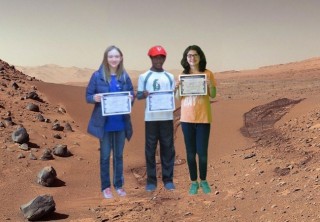400 students…209 proposals…35 semi-finalists…3 finalists…and then there was one team: Skylar Jordan and Amanda Kay, sophomores whose experiment “Shewanella oneidensis and Iron Ions in Microgravity” was selected to go to the International Space Station (ISS) later this year.
Students in grades 8-12 participated in the Student Spaceflight Experiments Program (SSEP) at Bullis, developing proposals for experiments that could be conducted in microgravity. The fascinating range of proposed experiments included “Will Microgravity Affect the Antimicrobial Function of Benzalkonium Chloride” and “Introduction of Meat Preservation in Space.”
Amanda and Skylar’s winning experiment could provide data useful for space colonization: obtaining and recycling water that is pure and free from large amounts of harmful heavy metal ions such as lead, chromium or iron. Their project focuses on the bacteria shewanella oneidensis that can reduce heavy metal ions that are dissolved in the water and remove them to make the water safe to drink.
SSEP is undertaken by the National Center for Earth and Space Science Education in partnership with Nanoracks, LLC. This on-orbit educational research opportunity is enabled through NanoRacks, LLC, which is working in partnership with NASA under a Space Act Agreement as part of the utilization of the International Space Station as a National Laboratory.


